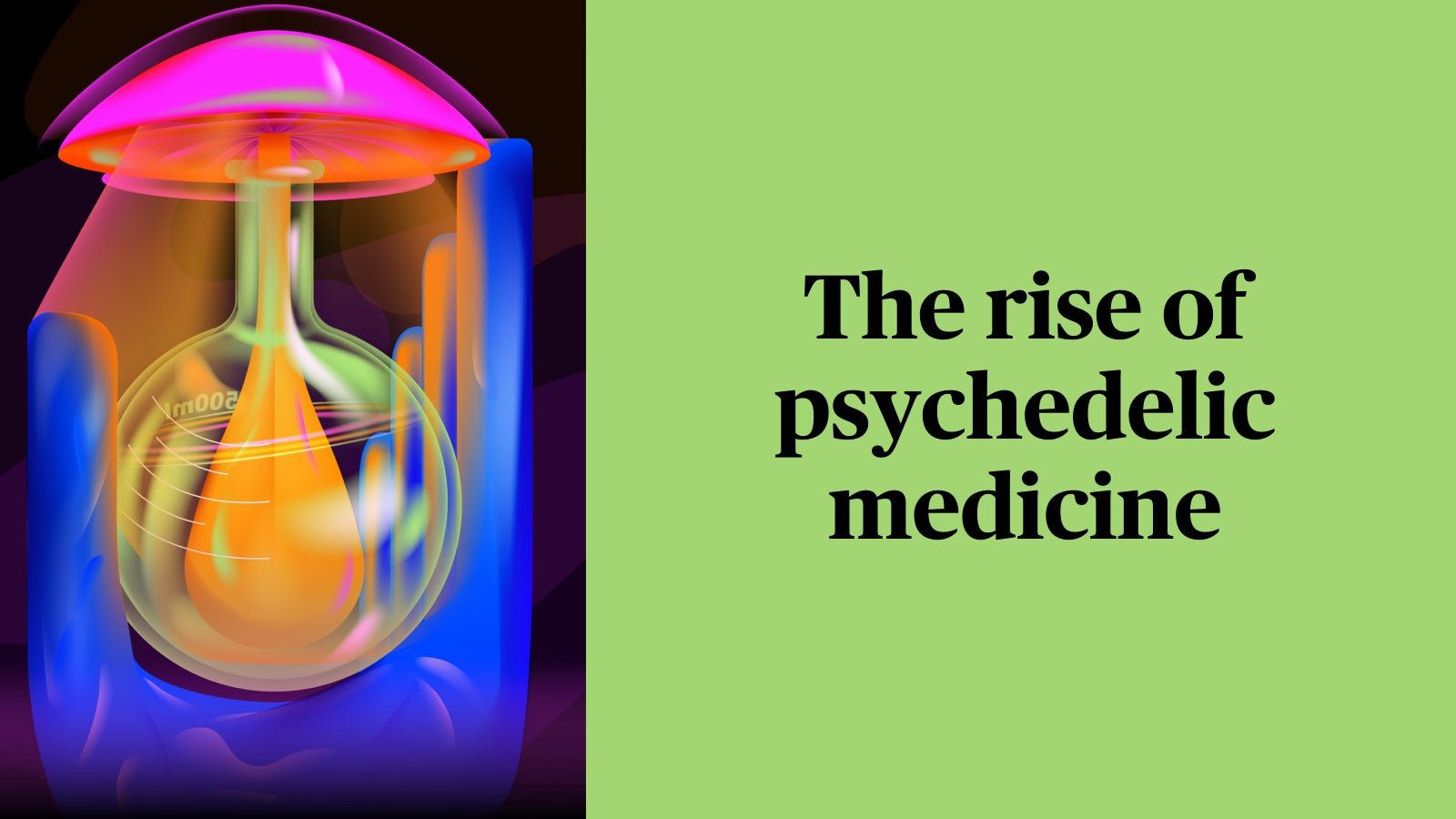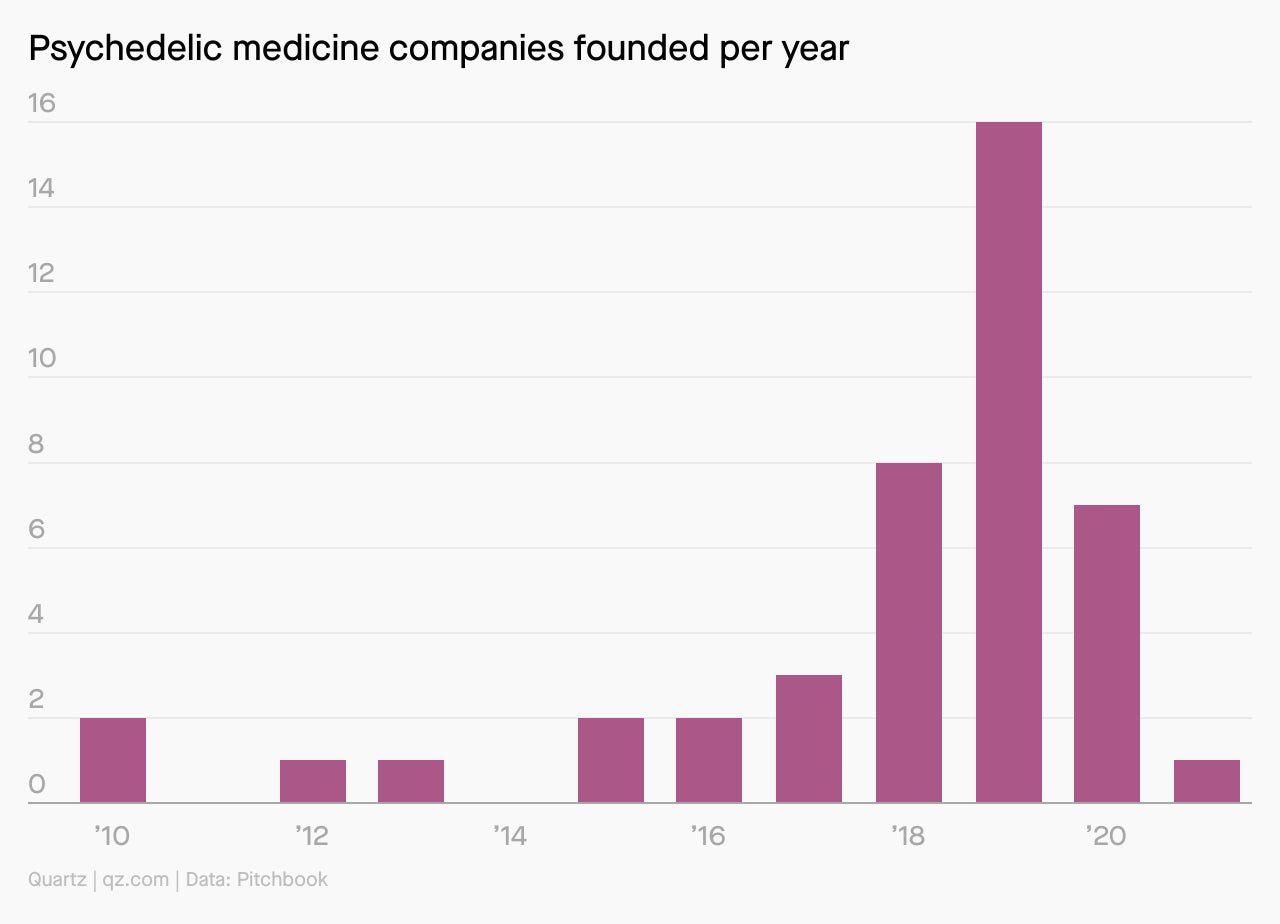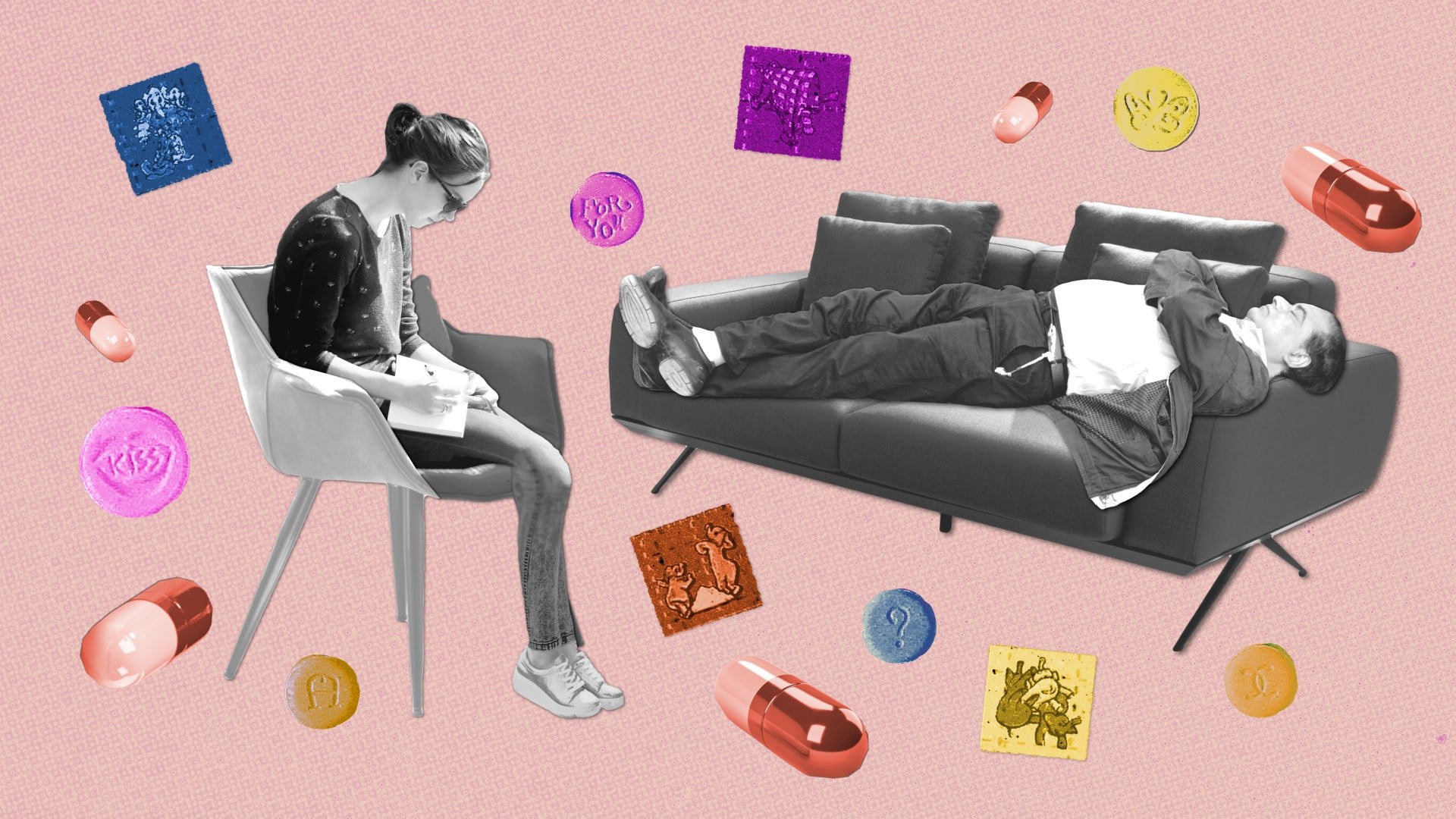For members—The rise of psychedelic medicine
[qz-guide-hero id=”434625233″ title=”💡 The Big Idea” description=”Psychedelics are increasingly promising treatments for mental illness. Now a growing community of startups wants in.”]


[qz-guide-hero id=”434625233″ title=”💡 The Big Idea” description=”Psychedelics are increasingly promising treatments for mental illness. Now a growing community of startups wants in.”]
By the digits
51.5 million: American adults living with mental illness in 2019, about 20% of the population
$201 billion: Annual cost of mental disorders, according to a 2016 study
67%: Participants in one recent study who, after using MDMA in several therapy sessions, no longer fit the diagnostic criteria for PTSD
33%: Participants in the same study whose PTSD was in remission after three sessions with MDMA
Schedule I: US government classification for psychedelic drugs including MDMA, LSD, and psilocybin, the strictest classification
$7 billion: Estimated value of the psychedelic medicine market by 2027, per a 2020 analysis
Explain it like I’m 5!
What are psychedelics, and how do they work to treat mental illness?
Psychedelics are substances such as LSD (acid), MDMA (ecstasy or molly), and psilocybin (mushrooms) that make people hallucinate, among other effects.
For millennia, these substances—or the naturally occurring ones from which they were derived—have helped people look inward, or feel connected to a higher power. Decades of research also suggest they are powerful treatments for psychiatric conditions such as PTSD, depression, and addiction, albeit when taken in a supervised setting.
Scientists still aren’t sure how psychedelics work, but they suspect the drugs elicit chemicals in our brains that make us feel happy and connected. That can alter our perspective on things, or change how we feel about our memories.
Brief history of psychedelic medicine
10,000 BCE: One of the earliest documented uses of psychedelics: Mushrooms are depicted in cave paintings in northern Australia.
Early 1900s: Scientists looking for new medicinal compounds synthesize psychedelics including MDMA and LSD.
1950s-1960s: Researchers start to experiment with how those synthetic compounds could treat psychiatric disorders such as addiction.
1970: US president Richard Nixon signs the Controlled Substances Act, putting psychedelics under the strictest control and effectively eliminating the scientific field studying their effects.
1986: The nonprofit Multidisciplinary Association for Psychedelic Studies is founded, representing the return of the field of psychedelic medicine.
Early 1990s: The first three studies assessing the safety and effects of psychedelics MDMA, ibogaine, and DMT are approved
2017: The US Food and Drug Administration designates MDMA as a breakthrough therapy
Charting psychedelic startups over time
As recently as 2019, the private sector of psychedelic medicine was, as one VC put it, “a formless pre-Big Bang void.” But over the past two years, the field has accelerated at an almost unbelievable pace.

Billion-dollar question
What has to happen for psychedelic medicines to reach patients in need?
The science may be promising and the business community may be ready, but there are still some hurdles to overcome:
🤑 Continued investment in drug development initiatives
🔓 Changing government regulation around psychedelics
🏥 Establishing scalable, reliable clinics where patients can have a therapeutic experience
👯 Continued destigmatization
⚖️ Clear ethical standards for the field
🚦 Ensuring patient access
🔬 More research to answer more questions
Person of interest
When Charles Grob was in college in the late 1960s, psychedelics were hard to miss. A few years later, Grob was working at a sleep lab, where he had to stay up all night and read sleepers’ brain waves via EEG. Grob had access to an extensive research library, and was astonished to discover patients dating back to the 1950s who were helped by psychedelics. “I devoured these articles and books, I became fascinated,” Grob says.
By the early 1990s, Grob had become a psychiatry professor at the Harbor-UCLA Medical Center and was one of the first researchers to get approval for early-stage trials into the effects of psychedelics. He tested the safety of MDMA on normal volunteers and psilocybin to treat anxiety in end-stage cancer patients. Today Grob is one of the leading voices in psychedelic medicine and is particularly passionate about the development of ethical standards around administering the drugs.
Watch this!
Researchers are rediscovering the value of psychedelics in mental health treatment, and the drugs are already improving lives—all before any compounds have been approved by the FDA. This video hones in on the research being done and makes an argument for decriminalizing psychedelics.
📣 Sound off
Would you try psychedelics for medicinal purposes?
In last week’s poll about sleep tech, 30% of respondents said they’d tried sleep tech and it was meh. Here’s hoping the next generation works better.
